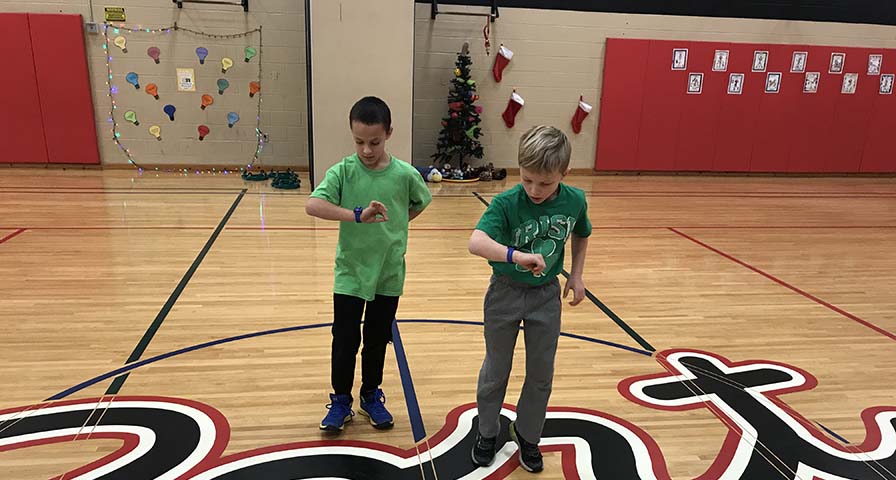Students at Hamilton Bicentennial Elementary School (Port Jervis, N.Y.) gave their teachers new insight into their athletic abilities during last year’s Warrior Kids Heart Challenge. Teachers Jon Foley and Nicole Beam created the challenge – an obstacle course fashioned after popular television competition American Ninja Warrior – as part of the school’s American Heart Association unit.
“The big clarity moment for us is seeing how good kids’ balance really is,” Foley said. “We don’t get to see them at home or in other classes, so seeing how well they acclimated to the obstacles…they aren’t everyday obstacles.”
Putting Agility Skills on Display for Teachers
Much of their curriculum encourages students to keep their heart rates up while completing fitness-focused activities such as jump rope or other agility exercises. Creating the Ninja Warrior Challenge brought student motivation to a different level.
“They had to jump off a trampoline and use both hands and land on a mat,” Foley said. “I think a lot of kids liked that one. There was another one where they had to do a lot of crawling under a net. The last one was a rope that we called the Tarzan Swing.”
The students handled many of the obstacles well – but Foley said students’ ability to climb and balance impressed both he and Beam. From a teaching perspective, they gained some insight they might build into future activities.
“They are doing a lot of jumping, and our school doesn’t have any steps,” Foley said. “They are jumping on things, crawling under and through things, and these aren’t things they do on a regular day. The clarity for us was that kids who aren’t great runners may be great climbers.”
The television-style fitness challenge also enabled the teachers to create teamwork opportunities for the students. The challenge called for students – working in groups of 3-4 students – to complete the course as many times as they could in the 35-minute class period. The key: the group couldn’t begin a new lap until each member completed the previous one.
“The goal was, in a group, to successfully complete the obstacles as many times as they could while staying in their target heart rate zones,” Foley said. “Kids who were in the target zone and getting the obstacles complete could do the course as many as four times.”
Teaching Essential Heart Rate Skills
The Ninja Warrior Challenge motivated students to give their best effort while reinforcing heart rate training skills students learn throughout the year. HBE’s students wear the IHT ZONE wrist heart rate monitors during class. They use the devices to gauge their effort level, to ensure they are exercising at a health-enhancing level.
“I think the IHT monitors do such a great job with having the blue, yellow and red because we are a K-6 building,” Beam said. “We can have all the students wear the monitors and understand what zone they are in just by looking down at them. It helps them know where they are.”
Teachers also use the ZONE monitors to give students an extra level of success and confidence. Even if some students couldn’t complete as many laps through the obstacle course as others, they found success by keeping their heart rate in the target zones:
- Blue indicates low-intensity heart rate
- Yellow indicates moderate-intensity heart rate
- Red indicated vigorous-intensity heart rate
“You could see that the students who you didn’t expect to be the athlete or be able to move on and do an actual ninja warrior course when they are older, they were able to have success just by wearing the monitors and seeing that they were able to stay in their target heart rate zones,” Beam said.
Foley and Beam give students a goal to spend 25 minutes out of their 35-minute PE period in the yellow or red zones.
“It’s simple,” she said. “It’s easy. As the kids are moving around, if we see that they are in blue then that’s a little more motivation for them to pick things up and get moving more. This helps them learn to pace themselves because that’s a hard thing to teach at the elementary level.”
Hard, but essential. Foley points to a number of other essential skills that rely on fitness – and heart rate – for students to develop.
“As physical education teachers, heart rate has to be one of the top five most important things,” he said. “Heart rate and having them understand the heart rate is one of the most important things because knowing how the body works with their stress levels is huge.”


